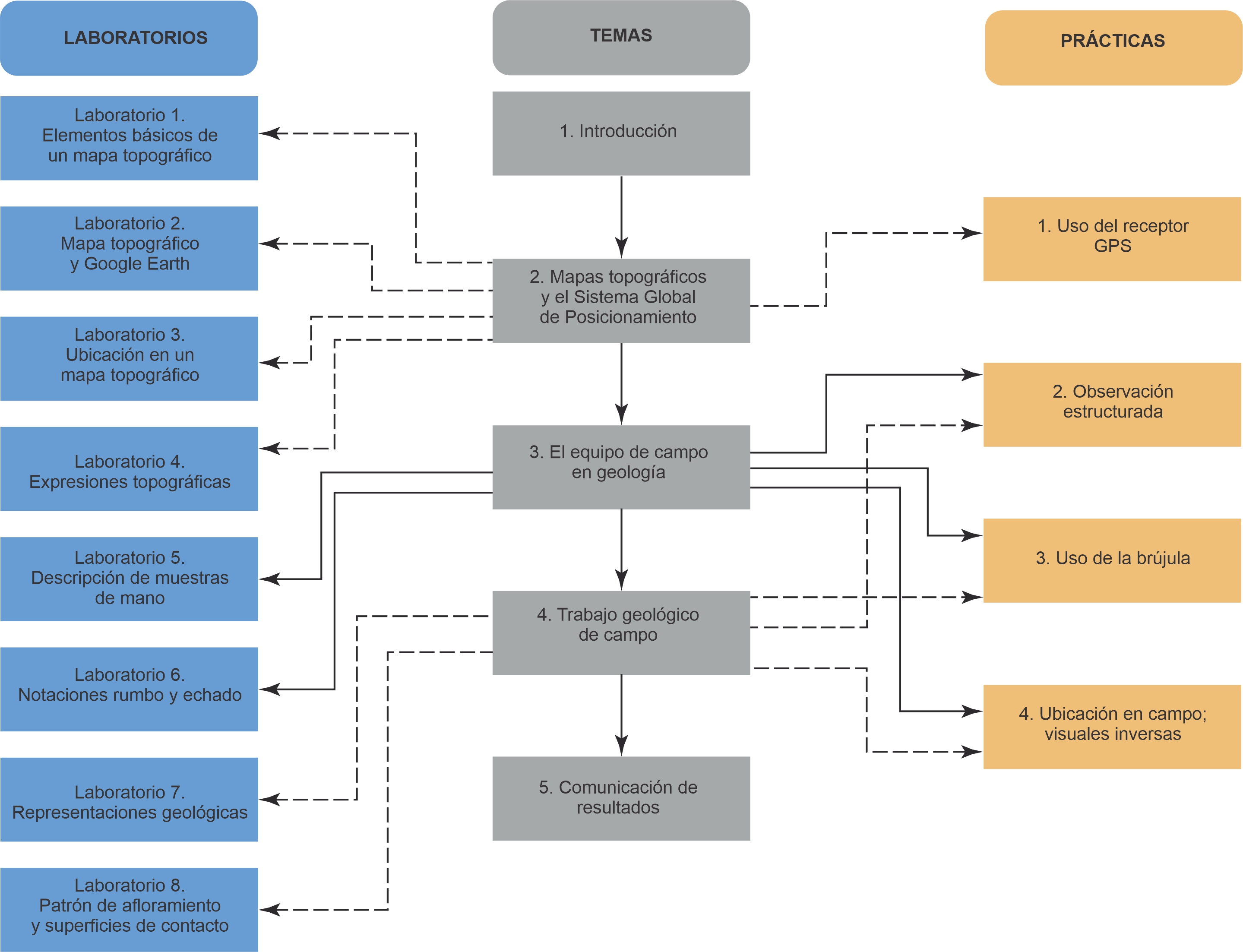Abstract
As a response to continuous study plans updating for Earth Sciences Engineering careers, the Faculty of Engineering at Universidad Nacional Autónoma de México has developed new learning systems in which students apply their knowledge, experiment with novel instruments and technologies to make the geological field work effective and productive. In the 2016 Study Plan update, the Geological Field Techniques subject was designed so that students have methodological resources for the field work development. The Manual was designed to provide didactic material that supports teaching-learning activities in the subject.
This manual has two sections. The first part consists of eight laboratories to be carried out in the classroom and virtual or self-taught format. In these laboratories, different examples of complementary applications for the theory as seen in the classroom are proposed. The second part consists of four practices proposed to be applied on the Ciudad Universitaria campus, Mexico City, for the development of skills and knowledge application. Likewise, the manual contains annexes and instructions for better use of tools in the geological field work. With this manual and the didactic experiences shared in this manuscript, we hope that Earth Sciences teachers, students and future professionals enjoy and apply these activities, as well as develop their skills, spatial and perceptive abilities for a better characterization of the geological-geophysical phenomena.
References
Allmendinger, R.W., Siron, C.R., and Scott, C.P., (2017), Structural data collection with mobile devices: Accuracy, redundancy, and best practices: Journal of Structural Geology, v. 102, p. 98–112.
Bloom, B., Englehart, M. Furst, E., Hill, W., & Krathwohl, D. (1956). Taxonomy of educational objectives: The classification of educational goals. Handbook I: Cognitive domain. New York, Toronto: Longmans, Green.
Brusi, D., Zamorano, M., Casellas, R. M., & i Plaza, J. B. (2011). Reflexiones sobre el diseño por competencias en el trabajo de campo en Geología. Enseñanza de las Ciencias de la Tierra, 19(1), 4-4.
Coe Angela (Editora), 2010, Geological Field Techniques, Wiley-Blackwell, EUA, 336 pp.
Facultad de Ingeniería, Universidad Nacional Autónoma de México. Temario de la asignatura Técnicas Geológicas de Campo: Recuperado de: https://www.ingenieria.unam.mx/programas_academicos/licenciatura/Geologica/2016/asignaturas_geologica_2016.pdf
Programa Google Earth para visualización de imágenes satelitales https:// earth.google.com
Programa Visible Geology: https://app.visiblegeology.com/
Página Sketchfab: https://sketchfab.com/
Página Gigapan: http://gigapan.com/
Shipley, T. F., Tikoff, B., Ormand, C., & Manduca, C. (2013). Structural geology practice and learning, from the perspective of cognitive science. Journal of Structural Geology, 54, 72-84.
Silva-Romo, G., Mendoza-Rosales, C.C., y Campos-Madrigal, E. 2010. Elementos de Cartografía Geológica, E-Pub. ISBN 978-607-02- 7900-3. Facultad de Ingeniería. DOI:http://dx.doi.org/10.22201/ fi.9786070279003e.2016. http://www.librosoa.unam.mx/ handle/123456789/291.
Silva-Romo, G., Mendoza-Rosales, C.C. (eds). 2016. Trabajo geológico de campo. E-Pub. ISBN 978-607-02-7908-9. Facultad de Ingeniería. DOI: http://dx.doi.org/10.22201/

This work is licensed under a Creative Commons Attribution-NonCommercial 4.0 International License.
Copyright (c) 2022 Universidad Nacional Autónoma de México

